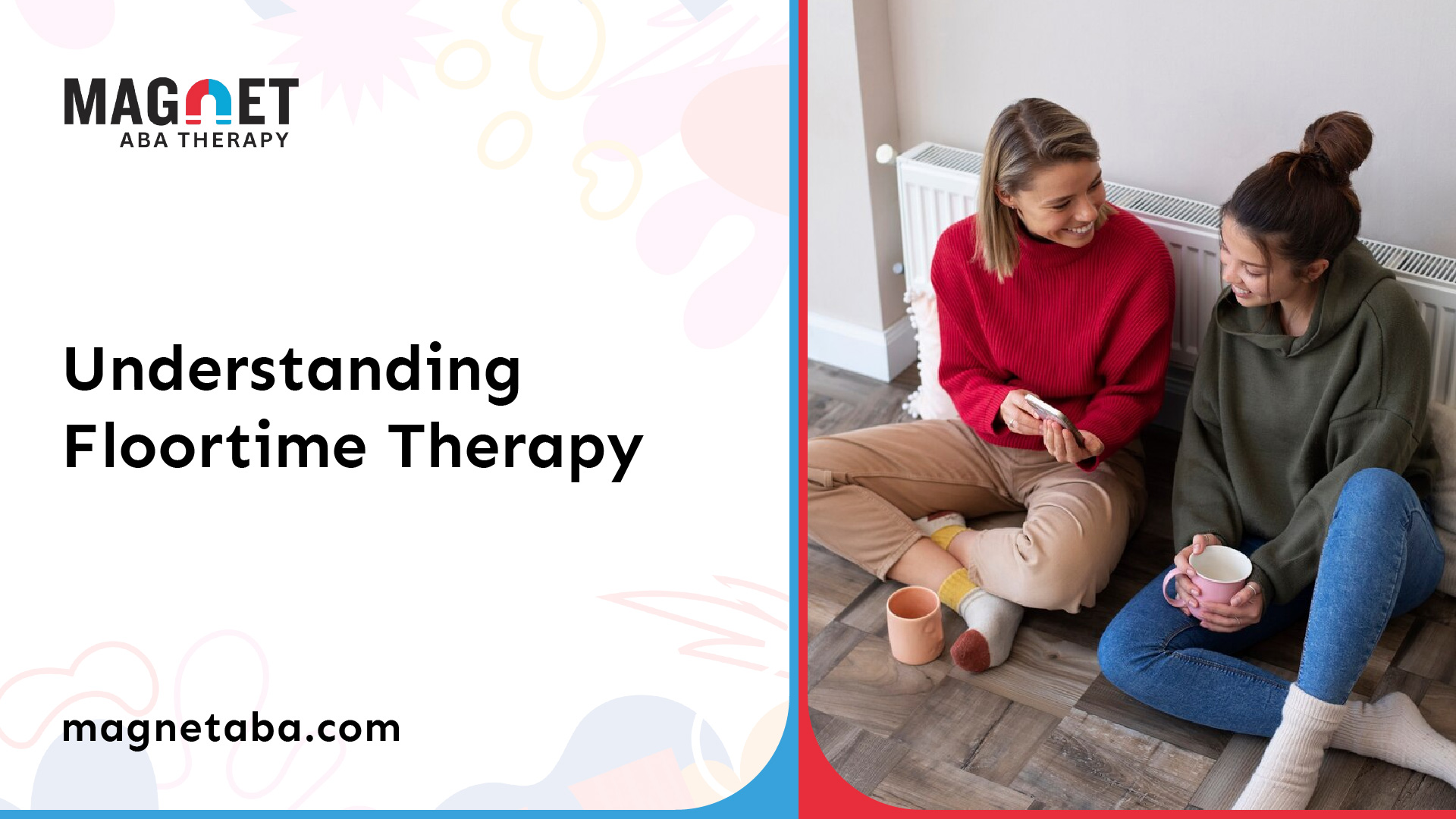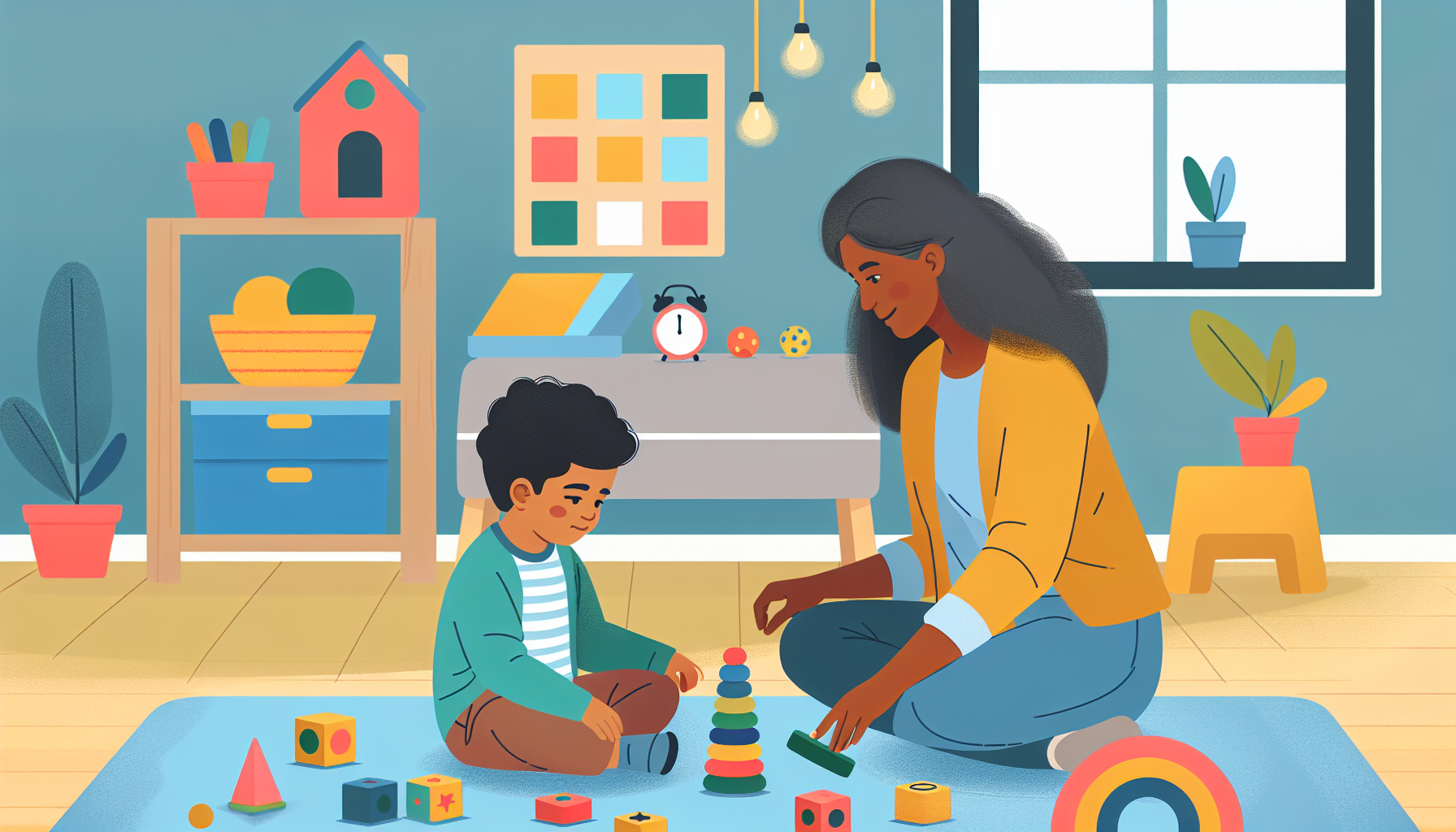
Understanding Therapy Options
When it comes to therapy options for children with autism, it's important for parents to explore and understand the various approaches available. Two commonly used therapies are floortime therapy and applied behavior analysis (ABA) therapy. Let's take a closer look at each of them.
The Basics of Floortime Therapy
Floortime therapy, developed in the 1980s by Dr. Stanley Greenspan and Dr. Serena Wieder, is a relationship-based therapy that aims to promote development and interaction through play. In floortime therapy sessions, parents or therapists engage with the child at their level, joining the child in their chosen activities and play. The sessions usually last 2 to 5 hours and focus on following the child's lead and encouraging back-and-forth play to maintain focus.
The goal of floortime therapy is to help children expand their "circles of communication" by building upon their strengths and interests. By actively participating in play and activities chosen by the child, parents or therapists provide opportunities for emotional and social growth.
Insights into ABA Therapy
ABA therapy, developed in the 1960s by O. Ivar Lovaas, is based on the science of learning and behavior. It focuses on using positive reinforcement to encourage desired behaviors while discouraging undesired behaviors. ABA therapy utilizes different teaching styles, such as pivotal response training (PRT) and discrete trial teaching (DTT), to teach specific skills.
Unlike floortime therapy, ABA therapy is typically therapist-led and involves scheduled sessions. The therapist works with the child in a structured environment, breaking down skills into smaller tasks and providing reinforcements for successful completion. ABA therapy aims to improve skills across various domains, such as communication, social interaction, self-care, and academic abilities.
Both floortime therapy and ABA therapy have their own unique approaches and benefits. Floortime therapy emphasizes emotional development through child-led play, while ABA therapy focuses on skill teaching through therapist-led sessions. It's important for parents to consider the individual needs and preferences of their child when choosing the most suitable therapy approach.
To learn more about specific therapy options and the pros and cons associated with each, continue reading our article on Understanding Therapy Options.
Approach and Focus
When it comes to therapy options for children with autism, two prominent approaches are Floortime therapy and Applied Behavioral Analysis (ABA) therapy. Understanding the differences between these approaches can help parents make informed decisions about the most suitable therapy for their child.
Child-Led vs Therapist-Led Sessions
In Floortime therapy, sessions are typically child-led, as mentioned by Songbird Therapy. This means that the parent or therapist follows the child's lead and engages in play or activities chosen by the child. The focus is on encouraging back-and-forth play and communication to maintain the child's focus and build emotional connections.
On the other hand, ABA therapy, as mentioned by Songbird Therapy, tends to be therapist-led. Scheduled sessions are designed to teach specific skills and target behavior modification. The therapist provides structured instructions and prompts to guide the child's behavior and learning.
Emotional Development vs Skill Teaching
Floortime therapy, as highlighted by Autism Speaks, places a strong emphasis on emotional development. The therapy aims to help children expand their "circles of communication" and build on their strengths. Play and interaction are used as tools to promote engagement, emotional connections, and communication skills.
In contrast, ABA therapy focuses on teaching specific skills and modifying behavior. It utilizes techniques like positive reinforcement and prompting to shape desired behaviors and reduce challenging behaviors. The goal is to help children acquire new skills, such as communication, self-help, and social skills.
It's important to note that both approaches have their merits, and the choice between Floortime therapy and ABA therapy depends on the individual needs and preferences of the child and their family. Some families may find that a combination of both approaches works best for their child's overall development.
Understanding the differences between child-led and therapist-led sessions, as well as the contrasting focuses on emotional development versus skill teaching, can assist parents in making informed decisions about the most appropriate therapy approach for their child with autism. By tailoring the therapy to their child's unique needs, parents can provide the most effective support and help their child thrive.

Research and Effectiveness
When considering therapy options for children diagnosed with autism, it's important to understand the research and effectiveness of different approaches. In this section, we will explore evidence-based practices and research on Floortime therapy.
Evidence-Based Practices
Applied Behavior Analysis (ABA) therapy is considered an evidence-based best practice treatment for autism by the American Psychological Association. It focuses on behavior modification techniques to teach and reinforce desired behaviors while reducing challenging behaviors. ABA therapy has been widely studied and has shown positive outcomes in improving various skills in individuals with autism. If you're interested in more information on ABA therapy, you can refer to our article on ABA therapy red and green flags.
On the other hand, research on the effectiveness of Floortime therapy as a treatment for autism is limited. Currently, there is not enough high-quality research available to consider it an evidence-based treatment. However, Floortime therapy is based on the Developmental, Individual-Difference, Relationship-based (DIR) model, which emphasizes emotional development and building relationships with the child. It is worth noting that the effectiveness of any therapy may vary depending on the individual child and their unique needs and circumstances.
Research on Floortime Therapy
While the research on Floortime therapy is not as extensive as that of ABA therapy, there have been studies examining its effectiveness in building social communication skills and engagement in autistic children. Floortime therapy has shown positive results in improving emotive functioning, communication skills, daily living skills, and parent-child interactions [3]. It is important to keep in mind that measuring success in developmental therapies like Floortime can be challenging due to the individualized progress each child makes.
A study conducted on home-based Floortime therapy showed significant progress in different levels of functioning among autistic children. The therapy improved emotive functioning, communication, and daily living skills. Additionally, parent-child interactions were enhanced, as reported by mothers. However, it's important to note that the outcome of Floortime therapy can be influenced by factors such as the severity of autism, duration of treatment, parental factors, and parental engagement in the therapy itself.
Another study found that Floortime therapy demonstrated significant development in adaptive behavior and sensory processing patterns. Social/emotional skills, such as increased relationship and social interaction, also showed improvement. The study also highlighted the positive impact of DIR-based creative art therapies for children receiving Floortime therapy.
While these studies provide encouraging insights into the effectiveness of Floortime therapy, it's essential to consider individual factors and consult with professionals experienced in autism therapies when making decisions about the most suitable treatment approach for your child.
Next, we will explore the pros and cons of Floortime therapy to provide a more comprehensive understanding of this treatment option.

Pros and Cons
When considering floortime therapy as an intervention for children diagnosed with autism, it is important to evaluate the benefits it offers, as well as the limitations and challenges that may arise.
Benefits of Floortime Therapy
Floortime therapy, also known as Developmental, Individual Difference, Relationship-Based (DIR) therapy, offers several benefits for children with autism. Some of the key advantages include:
- Building Skills and Emotional Connections: Floortime therapy focuses on building emotional connections and communication skills in children with autism through structured play sessions. By engaging in play based on the child's interests, this therapy promotes interaction and social engagement.
- Involving the Whole Family: Floortime therapy actively involves parents, guardians, therapists, or older siblings in the play sessions. By participating in the therapy, family members can better understand their child's needs, strengthen the parent-child bond, and provide ongoing support outside of therapy sessions.
- Portable and Safe Activity: Floortime therapy can be conducted in various settings, making it a portable and convenient option for families. It provides a safe and structured environment for children to explore and engage with their surroundings.
However, it is important to note that while floortime therapy can be beneficial for many children with autism, it may not be sufficient as a stand-alone intervention for those with higher support needs. Additional therapies or interventions may be necessary to address specific challenges and goals.
Limitations and Challenges
While floortime therapy has its benefits, it is essential to consider the limitations and challenges associated with this approach:
- Limited School Implementation: Floortime therapy may face challenges in being implemented within schools. Despite its potential benefits, few schools are willing to adopt this therapy due to various factors such as lack of resources, training, and conflicting educational priorities.
- Cost and Insurance Coverage: One of the limitations of floortime therapy is that it is often not covered by insurance, making it a costly intervention for families. The expenses associated with hiring a trained therapist can be a significant barrier for some families.
- Unique Progress for Each Child: Measuring success in developmental therapies like floortime can be challenging as each child progresses at their own pace. While research studies have shown positive outcomes in building social communication skills and engagement, it is important to recognize that progress and outcomes can vary for each individual.
Despite these limitations, many families have reported positive experiences and outcomes with floortime therapy. It is crucial for parents and caregivers to assess their child's specific needs, consult with professionals, and consider the available resources and support when making decisions about interventions for their child with autism.
Implementation and Impact
When it comes to the practical application of Floortime therapy for children with autism, sessions typically last from 2 to 5 hours and involve the parent or therapist following the child's lead. The goal is to participate in play or activities chosen by the child, encouraging back-and-forth play to maintain focus and build shared attention, engagement, and problem-solving skills. These sessions can take place in a calm environment, either at home or in a professional setting.
The role of the parent or caregiver is crucial in Floortime therapy. Training is provided to parents and caregivers to ensure they have the necessary skills to engage with their child during therapy sessions. By participating in the child's play and following their lead, parents can foster emotional connection and engagement, which are key aspects of Floortime therapy.
Success stories and case studies highlight the positive impact of Floortime therapy on children with autism. By focusing on meaningful connections and emotional engagement, this therapy approach aims to entice children to interact joyfully. It emphasizes the child's interests and actions, creating an environment that fosters communication, social skills, and emotional development.
Floortime sessions are typically led by parents, therapists, guardians, or older siblings of autistic children. These sessions involve observing the child, engaging with them based on their interests and actions, and working towards "opening and closing circles of communication." The aim is to build a strong foundation for communication and interaction, which can positively impact the child's overall development.
While Floortime therapy has shown promise in helping children with autism, it is important to note that every child is unique, and the effectiveness of therapy may vary. It is recommended to consult with healthcare professionals and therapists experienced in Floortime therapy to determine the best course of action for your child [3].
Implementing Floortime therapy requires a collaborative effort between parents, therapists, and caregivers. By creating an environment that supports the child's emotional and developmental needs, Floortime therapy can have a positive impact on children with autism, helping them to develop essential skills and fostering meaningful connections.
Future Considerations
As Floortime therapy continues to gain recognition as a potential intervention for children with Autism Spectrum Disorder (ASD), there is a need for further research to evaluate its efficacy and determine its place among other treatment options. The current research on Floortime therapy is limited, with available studies focusing primarily on training parents and therapists to implement Floortime interventions rather than assessing the effects of Floortime on standardized measures of development or language.
Need for Further Research
To establish the scientific validity of Floortime therapy, future research should address several key areas. Experimental control, empirical validity, and objective measurement of treatment effects are essential components for evaluating the efficacy of any therapeutic intervention. Therefore, studies should aim to compare the effects of Floortime therapy to treatments with proven effects, using standardized measures of development and language.
By conducting well-designed studies, researchers can investigate the impact of Floortime therapy on the core diagnostic features of ASD and determine if it leads to significant improvements in communication, social interaction, and emotional regulation. Additionally, research should explore the long-term effects of Floortime therapy and its potential benefits for individuals with ASD as they transition through different stages of development.
Evaluation of Therapy Efficacy
While there are anecdotal reports and case studies that suggest positive outcomes with Floortime therapy, it is important to critically evaluate the evidence. Retrospective studies like the one conducted by Greenspan & Wieder in 1997 have shown promising results, indicating positive outcomes for a significant proportion of children with ASD who received Floortime intervention. However, the lack of experimental control, experimenter bias, and use of non-standard measures limit the validity of these findings.
To establish the true efficacy of Floortime therapy, it is crucial to employ rigorous research designs, including randomized controlled trials, and use standardized measures to assess the impact of the intervention. This will provide a clearer understanding of the therapy's effectiveness in addressing the core symptoms of ASD and its potential to improve the quality of life for individuals on the autism spectrum.
As the field of autism research continues to evolve, ongoing research efforts are needed to expand our knowledge of Floortime therapy and its role in the treatment of ASD. By conducting well-designed studies and evaluating therapy efficacy, we can enhance our understanding of Floortime and its potential benefits for children with autism and their families.
References
[1]: https://www.songbirdcare.com/articles/floortime-therapy-versus-aba-therapy
[2]: https://www.autismspeaks.org/dir-floortime
[4]: https://www.ncbi.nlm.nih.gov/pmc/articles/PMC10275467/
[5]: https://asatonline.org/for-parents/becoming-a-savvy-consumer/is-there-science-behind-that-dir-floortime/












